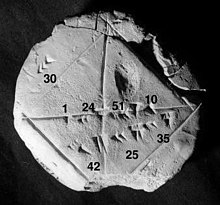Yale Babylonian Collection

Comprising some 45,000 items, the Yale Babylonian Collection is an independent branch of the Yale University Library housed on the Yale University campus in Sterling Memorial Library at New Haven, Connecticut, United States.
Established by the donation of a collection of cuneiform tablets by J. P. Morgan in 1909, the Collection is now home to one of the largest collection of ancient Near Eastern writing in America and ranks among the best repositories of its kind in the world. Beyond the ongoing study and conservation of its own holdings, the Yale Babylonian Collection stands as an important center for innovative research in Assyriology and other related fields.
The collection contains over 1,300 private and official letters that span several different time periods in Babylonian history. Several of these letters were still sealed in their clay envelopes to only be opened and read for the first time when they entered the collection.[2]
The collection is open on weekdays by appointment.
-
Full text of the War inscription by Entemena, in the Net Cylinder
References
External links
41°18′40″N 72°55′41″W / 41.3112°N 72.9281°W

!["Net cylinder" of Entemena, the second known cylinder describing the border conflict between Lagash and Umma, circa 2500 BCE.[3]](http://upload.wikimedia.org/wikipedia/commons/thumb/0/02/Net_cylinder_of_Entemena.jpg/200px-Net_cylinder_of_Entemena.jpg)


